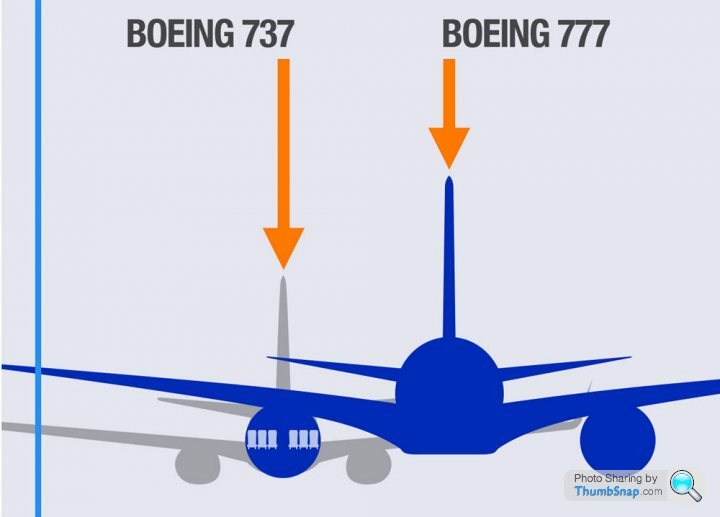Random facts about planes..
Discussion
Ginetta G15 Girl said:
I think you'll find that Area Bombing is Strategic bombing. 
The reason the Lancaster had such a long bom bay was that its forerunner (the Manchester) was specified as having to be able to carry torpedoes in the anti shipping role.
Now that I did not know. Thanks!
The reason the Lancaster had such a long bom bay was that its forerunner (the Manchester) was specified as having to be able to carry torpedoes in the anti shipping role.
Ginetta G15 Girl said:
I think you'll find that Area Bombing is Strategic bombing. 
The reason the Lancaster had such a long bom bay was that its forerunner (the Manchester) was specified as having to be able to carry torpedoes in the anti shipping role.
Indeed it is, you are quite right. I got my terms mixed up, precision bomber would be a better description.
The reason the Lancaster had such a long bom bay was that its forerunner (the Manchester) was specified as having to be able to carry torpedoes in the anti shipping role.
Interesting about the anti shipping role of the Manchester.
Edited by SpamCan on Tuesday 25th April 22:23
Yertis said:
Also, who was the B17 bombload so small, as compared to say the Lancaster? Surely not just a function of bomb-bay capacity.
From memory this was mainly due to the original specification - the USAAC at the time wanted a bomber to reinforce some more far flung places, Alaska, Hawaii etc. In the '30s the driver was to defend the US mainland from an attacking enemy fleet, not to carry out strategic bombing as it became. Because of this endurance took precedence over outright payload. Yertis said:
dr_gn said:
Carry them how far?
Also, who was the B17 bombload so small, as compared to say the Lancaster? Surely not just a function of bomb-bay capacity.Finally, the original specification was a few years older than what became the Lancaster. The B-17 first flew in 1935. The Lancaster flew at teh end of 1940 - evolving out of the abysmal Manchester.
They were designed to differing philosophies.
The Manchester had also been built to be capable of catapult launches. This stood the basic Lancaster in good stead when it came to airframe strength.
Ginetta G15 Girl said:
I think you'll find that Area Bombing is Strategic bombing. 
The reason the Lancaster had such a long bom bay was that its forerunner (the Manchester) was specified as having to be able to carry torpedoes in the anti shipping role.
Thanks. Clearer answer than google 
The reason the Lancaster had such a long bom bay was that its forerunner (the Manchester) was specified as having to be able to carry torpedoes in the anti shipping role.

CanAm said:
There were more B-24 Liberators built than B-17 Fortresses, but you hardly ever see them in WW2 documentary films.
Just like the Spitfires and the Hurricane in the Battle of Britain... The latter did the heavy lifting. dr_gn
Very good point. I should edit and add the distance. We often forget how it is important. Last week end I flew a Piper Pa-32 Saratoga (a 6-seater) with 4 adults and 2 children... I found out that, you can have only 40% of the fuel or the plane is overweight.
Edited by greghm on Wednesday 26th April 10:06
CanAm said:
There were more B-24 Liberators built than B-17 Fortresses, but you hardly ever see them in WW2 documentary films.
There's plenty of footage on youtube.In many ways the B-24 was a much better bomber than the B-17. It had better range and endurance and as a result it was used over a much bigger spread of activities - such as oceanic patrol as well as straightforward bombing.
It's main drawback was that it wasn't structurally as strong as the B-17, which was really over engineered.It was that factor that endeared the B-17 to its crews.
nonsequitur said:
A B747 is longer than the first ever flight, by the Wright Brothers.
Sorry  edant mode:
edant mode:According to Boeing, the entire distance of the Wright brothers' first flight in Kitty Hawk, North Carolina, was shorter than the length of a 747's economy cabin alone (I suppose that depends on the airline but certainly shorter than the entire length of the aircraft)
And
The 747 has six million parts, 171 miles of tubing, and a tail-height as tall as a six-story building.
SpamCan said:
Ginetta G15 Girl said:
I think you'll find that Area Bombing is Strategic bombing. 
The reason the Lancaster had such a long bom bay was that its forerunner (the Manchester) was specified as having to be able to carry torpedoes in the anti shipping role.
Indeed it is, you are quite right. I got my terms mixed up, precision bomber would be a better description.
The reason the Lancaster had such a long bom bay was that its forerunner (the Manchester) was specified as having to be able to carry torpedoes in the anti shipping role.
Gassing Station | Boats, Planes & Trains | Top of Page | What's New | My Stuff





